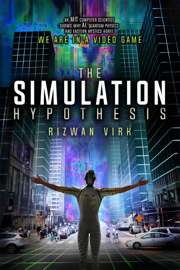Make the most of Apple’s digital assistant! Version 2.0, published December 22, 2020 When it comes to using your Apple devices, Siri is increasingly the hands-free, time-saving, and fun technology that ties everything together. Whether you want to ask a question, make a call, find your iPhone, or set a timer—not only can Siri do it, but it usually offers the fastest way. This book explores how to get the most out of Siri on your iPhone, iPad, iPod touch, Apple Watch, Mac, and HomePod. Siri, Apple's voice-controlled digital assistant, has been around since 2011, when it debuted on the iPhone. But since then, it has become vastly more powerful and useful, and has spread across Apple's entire ecosystem—it now runs on iOS, iPadOS, macOS, Apple Watch, Apple TV, and HomePod. Siri can listen and speak in a wide range of languages and accents, perform a long list of helpful day-to-day tasks, and keep you entertained in the process. Although Siri is easy to use, it's so multitalented that you might easily overlook some of its best features. In this book, former Macworld editor Scholle McFarland takes you deep into Siri's capabilities. You'll learn tons of tips and tricks about making the most of Siri. Discover how Siri can increase your efficiency and productivity, lend a hand when you're in the car or out for a jog, and even make it simpler to play music or find movies and TV shows to watch. Among many other things, this book teaches you: • What hardware and software you need to use Siri • How to change Siri's language and voice • Ways to personalize Siri by telling it about yourself, your contacts, and more • The numerous ways to activate Siri (by touch or by voice) • How to use Siri with AirPods, wired earbuds, or third-party headphones • What to do if the wrong device answers your "Hey Siri" request • How to ask Siri about sports, math and conversions, time, food, health, movies, people, stocks, the weather, jokes, real-world sounds, and random facts • Tips for asking Siri follow-up questions • How to control music (on any device, with or without an Apple Music subscription) • Techniques for using Siri to get directions, set reminders and appointments, send messages and email, and take notes • Ways to use Siri to search for files on your Mac • What Siri can and can't do for you on an Apple TV or HomePod • How to make and use Shortcuts for use with Siri on an iOS/iPadOS device or Apple Watch • How to get your HomePod to recognize different people's voices • Everything you need to know about your privacy where Siri is involved Plus bonus videos! Since Siri is an audio-based, interactive tool, there are some things that are more readily demonstrated than written about. So Scholle has put together a series of videos that illustrate techniques from her book, allowing you to see and hear exactly what happens as you use Siri. Whether you're new to Siri or a seasoned pro, you're sure to find lots of tricks and suggestions in this book to improve your experience of using Siri.





































































